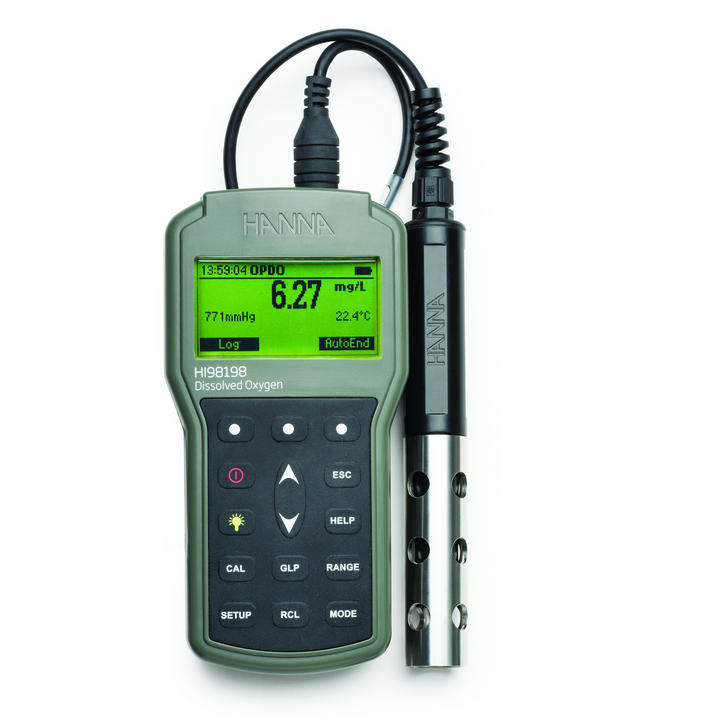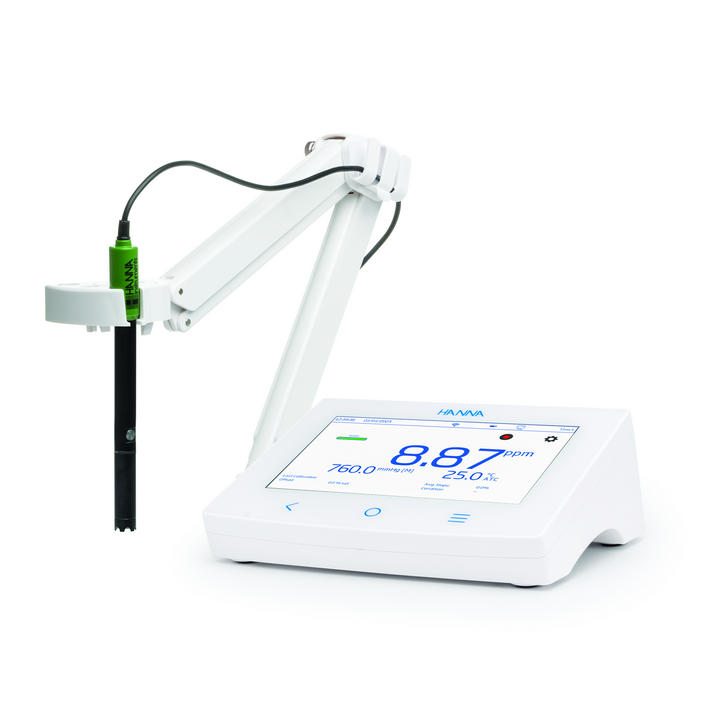Biological Oxygen Demand (BOD), is a measurement of the amount of dissolved oxygen (DO) that is used by aerobic microorganisms when decomposing organic matter in water.
Importance of BOD for Wastewater
Biological oxygen demand (BOD) is a significant parameter in evaluating water quality as it serves as an indicator to determine the impact of discharged wastewater on the surrounding ecosystem.
The higher the BOD value, the greater the amount of organic matter or “food” available for oxygen consuming bacteria. If the rate of DO consumption by bacteria exceeds the supply of DO from aquatic plants, algae photosynthesis or diffusing from air, unfavorable conditions occur. Depletion of DO causes stress on aquatic organisms, making the environment unsuitable for life. Further, dramatic depletion can lead to hypoxia or anoxic environments.
BOD is also extensively employed in wastewater treatment, where the breakdown of organic waste by microorganisms is commonly employed as a treatment method. Regulations and permits for biochemical oxygen demand effluent vary across countries and regions, such as the National Pollution Discharge Elimination System (NPDES) in the United States, which establishes a maximum allowable concentration for direct discharge into the environment or discharge into a municipal sewer system.
In order to safely be discharged back into the environment, treated waters must have sufficiently low BOD to avoid depleting ecosystems of their dissolved oxygen (DO) supply.
- Raw wastewater typically has a DO concentration of less than 20% or 1-2 mg/L, while a healthy river ecosystem should be near 100% saturation (8-10 mg/L).
- Discharge of insufficiently treated wastewater may cause bacteria to consume oxygen faster than aquatic plants, algae and natural aeration can replenish it.
- Resulting low DO levels can stress an ecosystem and have detrimental effects on aquatic life such as fish kills and species loss.
- BOD5 is the most common control test to determine quality of discharge waters, but it is very slow (5 days) and provides only limited accuracy.
- When waters are found to be over the compliance thresholds, it is too late to take corrective measures because they have already been discharged.
- Municipalities with combined sewer systems that also collect rainwater are subject to Combined Sewer Overflows (CSOs) which may release high-BOD waters.
Real-time monitoring for BOD is becoming increasingly popular. Continuous organics monitoring opens the door for many new treatment process control and optimization possibilities that can result in significant cost savings, improved water quality, and compliance peace of mind.
Wastewater applications for online BOD measurement include:
- Sewage Monitoring
- Chemical Dose Optimization
- Aeration Optimization
- Nutrient Dose Optimization
- Industrial Effluent Discharge Management
- Product Loss Monitoring
- Advanced Treatment Monitoring & Protection
- Water Reuse Optimization
- Effluent Pollution Control
Manual measurements for BOD:
Standard Methods 5210B is the most widely used laboratory technique to determine biological oxygen demand (BOD). Initially, a sample is analyzed and prepared to create favorable conditions for bacterial growth. This preparation may involve pH adjustment, removal of residual chlorine, and reduction of dissolved oxygen (DO) levels in supersaturated samples. The sample is then diluted and an appropriate amount of seed bacteria is introduced. The initial DO level is recorded and the sample is incubated at a temperature of 20°C for a period of 5 days.
Once the 5-day period elapses, the sample is taken out of the incubator and the final dissolved oxygen reading is obtained. BOD is calculated based on the depletion of DO and the volume of the sample, using the following formula:
BOD5 = BOD mg/L = [(Initial DO – Final DO) – seed correction] x dilution factor
However, relying solely on grab samples causes significant delays. When BOD results are received 5-7 days later, they usually provide limited value for process control and improving plant performance.
To address this issue, it is crucial for wastewater treatment plants to have practical and cost-effective solutions that provide continuous information about the composition and quality of wastewater.
Automatic methods for monitoring BOD
Hanna Instruments is the answer for all your titration equipment needs!
HI98198
Optical Dissolved Oxygen Meter
The HI98198 Optical Dissolved Oxygen Meter makes measuring the concentration of dissolved oxygen hassle-free. Optical DO technology doesn’t require a minimum flow rate, so there is less drift in your readings.
Perfect for the field or for the laboratory, the Quick Connect probe requires no membranes, no filling solution, and no warm-up time so you can measure without hesitation.
Your meter comes complete in a rugged, custom carrying case for easy transportation.
- Optical DO technology for fast and stable readings, even in tough environments.
- Digital probe with Smart Cap Technology eliminates costly, tiresome membranes and solutions.
- An IP67-rated waterproof, rugged body makes this portable meter ideal for field use.
- Optical DO technology for fast and stable readings, even in tough environments.
- Digital probe with Smart Cap Technology eliminates costly, tiresome membranes and solutions.
- An IP67-rated waterproof, rugged body makes this portable meter ideal for field use.
HI6421
Advanced Dissolved Oxygen Benchtop Meter with Optical DO Probe (opdo®)
HI6421 is a streamlined benchtop meter with a large touch screen display, comprised of a housing and an integrated module designed for fresh and saltwater measurements of dissolved oxygen.
HI6421 includes Hanna’s HI764113 optical dissolved oxygen probe (opdo®) that is based on the principle of fluorescence quenching.
- An immobilized Pt-based luminophore is excited by the light of a blue LED and emits a red light
- As oxygen interacts with the luminophore it reduces the intensity and lifetime of the luminescence
- The lifetime of the luminescence is measured by a photodetector and is used to calculate the dissolved oxygen concentration
- An immobilized Pt-based luminophore is excited by the light of a blue LED and emits a red light
- As oxygen interacts with the luminophore it reduces the intensity and lifetime of the luminescence
- The lifetime of the luminescence is measured by a photodetector and is used to calculate the dissolved oxygen concentration
Have questions?
Contact a Hanna Technical Specialist at [email protected] or using our contact form.
SOURCES:
Sulivan Jouanneau, Methods for assessing biochemical oxygen demand (BOD), November 2013

With Great Product
Come Great Results





